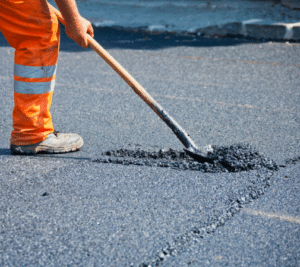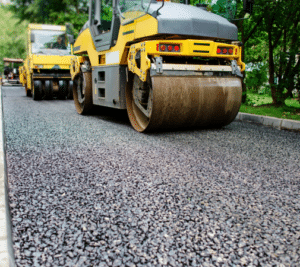Your driveway gets a lot of use, and that can make it deteriorate more rapidly than you’d like. The pavement can easily get worn down between vehicles and people walking on the driveway. You want the driveway to look great and to function well, but it may be uneven and difficult to walk and drive on. With a concrete apron, you can make your driveway more attractive and preserve the surface. A concrete driveway apron is used for both function and visual flair for homes and businesses.
What Is a Concrete Apron?
A concrete apron is an area of concrete that can be put in several areas around a home. It can be installed at the entrance of the driveway, in the area in front of the garage, or around the home’s perimeter. This apron is often called an approach. The area of concrete that is the apron can be installed in a number of styles, lengths, and widths according to what your home needs. Building codes may also factor into the specifics of the concrete apron.
There are three functions that a concrete apron can serve. It can be used simply because it looks great and can add to your curb appeal. It can also be used to help manage stormwater that comes in on the driveway. It is also used to smooth out the gradient that exists between different sections of your driveway.
When it’s used to manage stormwater, a driveway apron can be installed so that it helps water disperse instead of pooling on the driveway and causing damage to it. When used to smooth a gradient, it can help the driveway be easier to drive on and may even prevent damage to the car. It can also make it safer to walk on the surface because it’s smoother and more even.
It’s a far easier slope to walk and drive on than when there is a highly different grade between the driveway and garage. When used for aesthetics, driveway aprons add something extra to the driveway and may add value to your home. If you’ve ever found that your car scrapes the driveway when it pulls out, a concrete apron can end this problem for good.
Why Use Concrete?
A concrete apron that a Tucson concrete contractor installs is made with concrete for a reason. While asphalt is easier to seal and repair, concrete is the preferred material for these aprons. It has a long life and is highly durable. It also looks good and provides a sturdy surface to walk and drive on. It can handle a lot of vehicles without getting much wear, and it can give you better drainage.
A concrete apron is commonly used right in front of the garage door so that there is a nice transition between the concrete flooring in the garage and the asphalt on the driveway. These two surfaces have different grades, and the concrete driveway apron can ease the difference between them for a smoother, more stable area. It also serves as a visual separation between the driveway and the garage. And because it’s concrete, it will be a different color from the asphalt, making a clear distinction between them.
Sizing a Concrete Apron
So, how big are these aprons? The answer depends on several factors. The building codes for your area and any HOA requirements may affect how large the driveway apron can be. It may be anywhere from two to six feet wide, and it can be from about eight to 15 feet long. This is the measurement from the house to the end of the apron. The width will be the width of the driveway. With a well-installed apron, it fits nicely into the shape and size of the driveway.
If the apron is needed around the garage, it will be installed along the garage’s entire perimeter. If you have the apron installed at the far end of the driveway up against the street, there may be questions about how you can work around the sidewalk. Your Tucson concrete contractor will know the local construction codes and how the apron must be installed to stay compliant.
Concrete Apron Installation
A lot goes into installing a concrete driveway apron. It takes a lot of equipment and materials to ensure that it is installed well and will keep functioning for a long time. The driveway is first measured and analyzed to see what the grade is as well as the size. Then, the exact placement of the concrete apron is marked, often with nails and a string. That’s where the contractor will cut through the asphalt.
Cutting through the driveway with a saw is a big job. It takes a large saw to cut all the way through it. Then, a hammer drill is used to break it into pieces that will be small enough to pick up and carry. A pick is used to pry up the smaller pieces of asphalt. Then, the contractor gets rid of the waste that was removed. Municipal trash pickup often won’t take this kind of construction waste, so the contractor must dispose of it.
Then, the thickness of the asphalt is measured. Stakes are put at the midpoints and corners. These are measured to see how much of the bed needs to be removed or added. Sand or crushed concrete is then applied to level out the bed that was under the asphalt.
A compactor is used to compact the sand or crushed concrete into place. Steel rebar may be placed into the space if needed. Once the bed is level and packed, the concrete can be poured into the space, and the grade can be created. Finishing tools will be used to make the concrete level and smooth. It is then brushed so that the surface isn’t slippery. A seal and cure are then added to the concrete to finish the apron.
Once you have a concrete apron in place, your driveway or other areas will look and function better.



